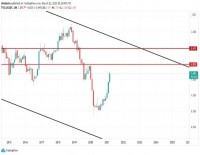|
By Mark Melin MSR Investments is a short-term systematic managed futures program, trading primarily in the interest rate complex and stock indices with a smaller portfolio exposure to currencies, gold and crude. The commodity trading advisors general trade holding period is a few days to a few weeks, exposing it to a degree of volatility. However, with a reported standard deviation near 3.04, compared to an industry average of trend followers of 5.48, MSR has kept volatility in check with near equal upside and downside volatility levels. With a margin to equity ratio reported in the high single digits, the firm’s returns have been in the low single digits but risk measures have also been low as well. "We have found that using a variety of sizing techniques is the most efficient way to risk manage a systematic portfolio." - Michael Rulle, founder, MSR "We are expecting (overall market volatility) to increase over the near term," said MSR’s founder Michael Rulle. “Equity markets, for example, reached close to 12 year lows in the recent four month rally, which is to be expected. But beneath the recent measured historical volatility, the volatility index (VIX) has maintained a 30% to 50% premium. When volatility drops below a defined level, we place a floor on volatility when vol-adjusting our positions. We limit daily VAR and discount the historical measured correlation when sizing positions." "We have found that using a variety of sizing techniques is the most efficient way to risk manage a systematic portfolio," Mr. Rulle disclosed. “As previously mentioned, we put a floor on volatility when vol-adjusting positions as well as discounting the portfolio benefits of correlation. We also use daily VAR limits to size positions and we will decrease equity positions intraday if the drawdown is above a pre-set size." What is interesting about MSR is their multi-algorithmic approach to systematic trading. MSR utilizes hundreds of individual trading models that basically fall into two categories: momentum (trend following) and reversal (counter-trend). Thus, one set of momentum formulas might determine when a definitive price trend is in place and a buy or sell order would then follow that trend. One set of reversal formulas would attempt to determine when a price trend was ending and buy or sell based on that trade signal. "The Program's algorithms were ultimately derived from the observation that financial markets have a slight but statistically significant tendency to counter-trend at certain times and trend at other times. We have created a series of identically structured algorithms for each market with different sets of parameters (48 for "reversal" and 12 for "momentum"). These algorithms were derived from one market and applied identically (vol-adjusted) to all markets we trade. Directional, low volatility markets are generally least favorable for the Program if they persist for long periods of time. Markets with medium or high volatility, which are relatively directionless, are typically most favorable. This is a generalization as we can also be impacted by "path dependency". The reason we use so many variations of the same algorithms (one each for "reversal" and "momentum") is to maximize the probability of capturing the path dependency we perceive in markets, but which are also stochastic in nature." In order to determine the appropriate strategy weighting, MSR utilizes a probability formula that identifies the market environment and makes strategy adjustments. For instance, if the mathematical formula determined that certain markets had a propensity to continue a trend in a singular direction, the strategy would weight heavier towards the momentum strategy. To keep its volatility low, MSR utilizes a low margin to equity ratio, reported at 7%. The industry average for trend following programs is nearly double that. The higher the margin usage the more potential volatility a CTA might experience. With just over $16 million under management, and $13.2 million being acquired in the last year, the CTA will approach their third year in business this September, a critical milestone for emerging CTAs. Trader Background Prior to founding MSR in 2008, Mr. Rulle was President of Graham Capital Management from 2002 to 2007. While at Graham, Mr. Rulle chaired the Investment and Risk Committee and was directly responsible for the firm’s discretionary portfolio managers. "Graham Capital is a unique and great firm. It is one of the few true CTAs which was able to expand successfully in the discretionary macro space. I really enjoyed my six years at Graham and learned a great deal from the experience." From 1999-2002, Mr Rulle was President and CIO of Hamilton Partners, an internal “hedge fund" for the Bermuda reinsurance company, Stockton Inc., where he managed convertible arbitrage, merger arbitrage, volatility arbitrage, bond arbitrage and equity market neutral portfolios. From 1994-1999, Mr. Rulle was CEO of CIBC World Markets Inc. where he was primarily responsible for global derivatives, securitization, asset management and the U.S. loan business. He co-chaired CIBC World Market’s Global Risk Committee and was a member of the global bank’s Credit Committee. Prior to joining CIBC, Michael ran the derivatives business at Lehman Brothers and rose to become a member of the Executive Committee. |
|
This article was published in Opalesque Futures Intelligence.
|





 RSS
RSS









